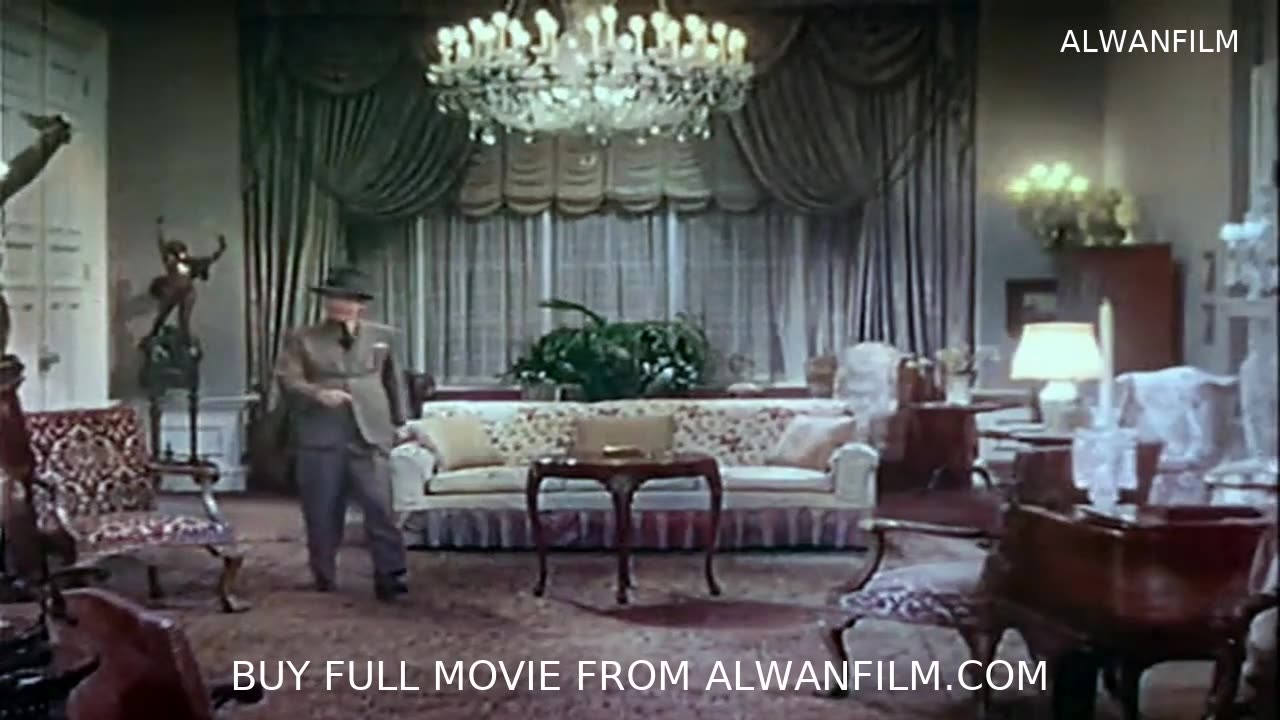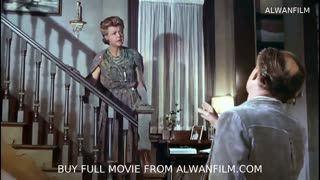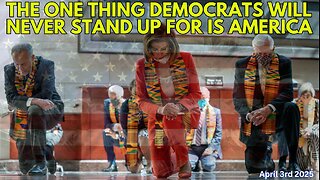Premium Only Content

Midnight Club Colorized
Midnight Club Colorized
Review: Midnight Club 1933 Colorized - A Journey Through Crime and Intrigue
Introduction
In the annals of classic cinema, "Midnight Club 1933" stands out as a captivating tale of crime and intrigue. Directed by Alexander Hall and George Somnes, this film noir takes audiences deep into the underbelly of London's criminal underworld. Recently, the film has garnered renewed interest due to its early colorized version, sparking debates among film enthusiasts and scholars alike. In this article, we will delve into the world of "Midnight Club 1933," examining its plot, characters, and the impact of its colorization on the viewing experience.
Check The Full Colorized Movies List
Check Our YouTube Channel
Check Our Colorized Movies Trailer Channel
Understanding Midnight Club 1933 Colorized: Director, Cast, and Genre
"Midnight Club 1933" was helmed by the dynamic duo of Alexander Hall and George Somnes, both of whom brought their distinct directorial styles to the project. The film features an impressive cast, with Clive Brook and George Raft delivering standout performances as the leading characters. Set in the genre of crime drama, "Midnight Club 1933" explores themes of loyalty, deception, and the relentless pursuit of justice.
The film's directors envisioned a fast-paced, tightly-woven narrative that kept audiences on the edge of their seats. Their collaboration resulted in a film that masterfully blends suspense, action, and drama, making it a quintessential example of early 1930s crime cinema.
Exploring the World of Midnight Club 1933 Colorized Plot and Characters
"Midnight Club 1933" unfolds in the bustling streets of London, where a group of American gangsters operates under the cover of darkness. The story centers around the suave and cunning Nick Mason, portrayed by Clive Brook, who leads a double life as both a respected member of society and a notorious criminal mastermind. His partner in crime, the hot-headed and daring Johnny Martin, played by George Raft, adds an element of unpredictability to their schemes.
The film kicks off with a daring heist that sets the stage for a series of cat-and-mouse games between the criminals and law enforcement. As Nick and Johnny navigate the treacherous waters of the London underworld, they encounter a host of colorful characters, including the enigmatic nightclub singer Iris Whitney, portrayed by Helen Vinson, and the relentless detective Arthur Bradley, played by Sir Guy Standing. The interplay between these characters drives the narrative forward, creating a web of intrigue and suspense that keeps viewers hooked from start to finish.
The Art of Film Colorization
Film colorization, the process of adding color to black and white footage, has long been a subject of debate among filmmakers and audiences. While some view it as a way to breathe new life into classic films, others argue that it can compromise the original artistic vision and historical authenticity. The process involves intricate techniques to ensure that the added colors harmonize with the film's existing aesthetic, enhancing rather than detracting from the viewing experience.
Early Colored Films: A Brief History
The history of early colored films is a testament to the evolving nature of cinema. Initially, color was introduced through hand-painting frames, tinting, and toning techniques, which provided a splash of vibrancy to silent films. With the advent of Technicolor in the late 1920s and early 1930s, filmmakers gained access to more sophisticated colorization methods, leading to the creation of visually stunning films that captivated audiences worldwide.
These early experiments with color paved the way for future innovations, influencing the development of color cinema and shaping the way stories were told on screen. The transition from black and white to color brought a new dimension to filmmaking, allowing directors to use color as a tool for storytelling and emotional impact.
Midnight Club 1933 and Its Early Colored Version
The decision to release "Midnight Club 1933" in an early colored version has reignited interest in this classic crime drama. The colorization process, while controversial, offers a fresh perspective on the film, highlighting details and nuances that may have been overlooked in the original black and white version. From the vibrant hues of the nightclub scenes to the moody shadows of the London streets, colorization adds a new layer of depth to the film's visual narrative.
This colored version allows modern audiences to appreciate the film in a new light, bridging the gap between past and present. It also sparks a dialogue about the preservation and reinterpretation of classic films, challenging viewers to reconsider their perceptions of cinematic history.
The Debate Over Film Colorization
As with any artistic endeavor, the colorization of classic films elicits strong opinions from both supporters and detractors. Proponents argue that colorization makes these films more accessible to contemporary audiences, potentially attracting a new generation of viewers. They believe that the added colors can enhance the storytelling experience, bringing out details that were previously obscured by the limitations of black and white photography.
Conversely, critics contend that colorization can undermine the integrity of the original film, altering its aesthetic and emotional impact. They argue that the filmmakers' original vision should be preserved, and that colorization may distort the historical and cultural context of the film. This debate highlights the broader tensions within the film community between innovation and preservation, raising important questions about the future of classic cinema.
Examining Midnight Club 1933 as an Early Colored Film
Viewing "Midnight Club 1933" in its early colored incarnation offers a unique opportunity to re-evaluate the film's artistic and narrative elements. The colorization process brings a new dimension to the film's visual storytelling, accentuating the contrasts between light and shadow, and enhancing the mood and atmosphere of each scene.
The vibrant colors of the nightclub scenes, for example, create a lively and dynamic backdrop for the characters' interactions, emphasizing the glamour and danger of their criminal activities. Meanwhile, the darker, more muted tones of the film's nighttime sequences underscore the suspense and tension that permeate the narrative.
However, this reinterpretation also raises questions about the balance between artistic fidelity and creative experimentation. While some viewers may appreciate the added visual richness, others may feel that the colorization detracts from the film's original aesthetic and emotional impact. Ultimately, the decision to embrace or reject colorization is a matter of personal preference, reflecting the diverse perspectives within the cinematic community.
Influence and Legacy: Midnight Club 1933 Colorized's Impact on Cinema
"Midnight Club 1933" has left an indelible mark on the crime drama genre, influencing subsequent films and inspiring generations of filmmakers. Its innovative narrative structure, complex characters, and atmospheric cinematography set a new standard for crime cinema, paving the way for future classics such as "The Maltese Falcon" and "Double Indemnity."
The film's exploration of themes such as loyalty, betrayal, and the blurred lines between good and evil resonates with audiences to this day, highlighting the timeless nature of its storytelling. Its impact can be seen in the work of contemporary directors who continue to draw inspiration from its visual and narrative techniques, ensuring that "Midnight Club 1933" remains a touchstone for the genre.
Director's Cinematic Legacy: Beyond Midnight Club 1933 Colorized
Alexander Hall and George Somnes, the directors of "Midnight Club 1933," made significant contributions to the world of cinema beyond this classic crime drama. Hall, in particular, went on to direct a series of successful films in various genres, showcasing his versatility and talent as a filmmaker.
Hall's subsequent works, such as "Here Comes Mr. Jordan" and "My Sister Eileen," demonstrate his ability to craft compelling narratives with a keen eye for detail and a deep understanding of character dynamics. His influence can be seen in the work of many modern directors who continue to explore the themes and techniques pioneered in his films.
Somnes, though less prolific, also left his mark on the industry with a number of noteworthy projects. Together, their collaboration on "Midnight Club 1933" remains a testament to their combined creative vision and enduring legacy in the world of cinema.
Themes Explored in Midnight Club 1933 Colorized
"Midnight Club 1933" delves into a range of themes that continue to resonate with audiences today. Central to the film's narrative is the exploration of loyalty and betrayal, as characters navigate the treacherous landscape of the criminal underworld. The film also examines the moral ambiguities of crime and justice, challenging viewers to question their own perceptions of right and wrong.
The theme of identity plays a crucial role in the story, as characters grapple with their dual lives and the masks they wear to survive in a world of deception and intrigue. The film's exploration of power dynamics and the struggle for control adds another layer of complexity to the narrative, highlighting the precarious balance between ambition and downfall.
Reception and Controversy Surrounding Midnight Club 1933 Colorized
The release of "Midnight Club 1933" in its early colored version has sparked both acclaim and controversy among critics and audiences. While some praise the film's visual beauty and thematic richness, others raise concerns about the impact of colorization on its original aesthetic.
Critics have lauded the film for its engaging narrative, strong performances, and atmospheric cinematography, hailing it as a quintessential example of early 1930s crime cinema. However, the debate over colorization has led to a divided reception, with some viewers embracing the new interpretation while others remain loyal to the original black and white version.
Where to Watch Midnight Club 1933 Colorized Online
For those eager to experience the timeless brilliance of "Midnight Club 1933," the film is available on various streaming platforms, ensuring accessibility to audiences worldwide. Whether in its original black and white format or the early colored rendition, "Midnight Club 1933" remains essential viewing for cinephiles and newcomers alike.
FAQs About Midnight Club 1933 Colorized
Common queries surrounding "Midnight Club 1933" range from its historical accuracy to its thematic resonance in modern times. By addressing these frequently asked questions, viewers can gain a deeper understanding of the film's enduring appeal and cultural significance.
Q: Is "Midnight Club 1933" historically accurate?
A: While the film is a work of fiction, it captures the essence of the criminal underworld in 1930s London, offering a compelling portrayal of the era's social and cultural dynamics.
Q: What is the significance of the film's title?
A: The title "Midnight Club 1933" refers to the clandestine nature of the criminal activities depicted in the film, as well as the year of its release. It evokes the sense of mystery and intrigue that permeates the narrative.
Q: What is the symbolism of the film's imagery?
A: The imagery in "Midnight Club 1933" is rich with symbolism, reflecting the themes of deception, power, and moral ambiguity. From the shadowy streets of London to the opulent interiors of the nightclub, each scene is carefully crafted to enhance the film's atmospheric tension and narrative depth.
Conclusion
In conclusion, "Midnight Club 1933" stands as a testament to the enduring power of classic cinema, its legacy continuing to captivate and inspire audiences to this day. The early colored version offers a fresh perspective on this timeless crime drama, inviting viewers to re-examine its themes and visual storytelling through a new lens. Whether experienced in its original black and white format or the colorized rendition, "Midnight Club 1933" remains a masterful exploration of loyalty, deception, and the relentless pursuit of justice. As we continue to navigate the evolving landscape of cinema, let us celebrate the enduring legacy of this remarkable film and the visionary directors who brought it to life.
-
 1:00
1:00
AlwanFilm
1 day agoAll Fall Down 1962 Colorized
37 -
 LIVE
LIVE
BonginoReport
2 hours ago“Liberation Day”: Trump Champions Economic Nationalism - BR Early Edition w/Evita (Ep.174)
24,432 watching -
![🔴[LIVE] THE STOCK MARKET IS CRASHING || The MK Show](https://1a-1791.com/video/fww1/46/s8/1/3/8/R/y/38Ryy.0kob-small-The-MK-Show-Apr.-3rd.jpg) LIVE
LIVE
Matt Kohrs
10 hours ago🔴[LIVE] THE STOCK MARKET IS CRASHING || The MK Show
1,194 watching -
 LIVE
LIVE
Wendy Bell Radio
4 hours agoThe One Thing Democrats Will Never Stand Up For Is America
6,174 watching -
 LIVE
LIVE
Dear America
10 hours agoRINOS Vote WITH Dems Against Trump Tariffs + Girl Refuses To Compete With Biological Male?!
3,088 watching -
 1:29:02
1:29:02
Game On!
14 hours ago $1.37 earnedAntonio Brown was RIGHT! Rodgers signing with Steelers is IMMINENT!
5.25K3 -
 10:18
10:18
Friday Beers
13 hours agoWe Became the Highest Paid Street Performers in Los Angeles
19.5K11 -
 19:01
19:01
World2Briggs
12 hours ago $5.29 earnedMove Here Before It’s Too Late! 10 Future Boomtowns in the U.S.
22.3K10 -
 8:50
8:50
The Rad Factory
19 hours ago $5.07 earnedShifter Kart on Snow Tracks Rips City Streets
21K12 -
 2:29:58
2:29:58
Wahzdee
4 hours agoPUBG is 8 Years Old & Still Beats Every Other BR 🤷♂️🎯
22.7K5